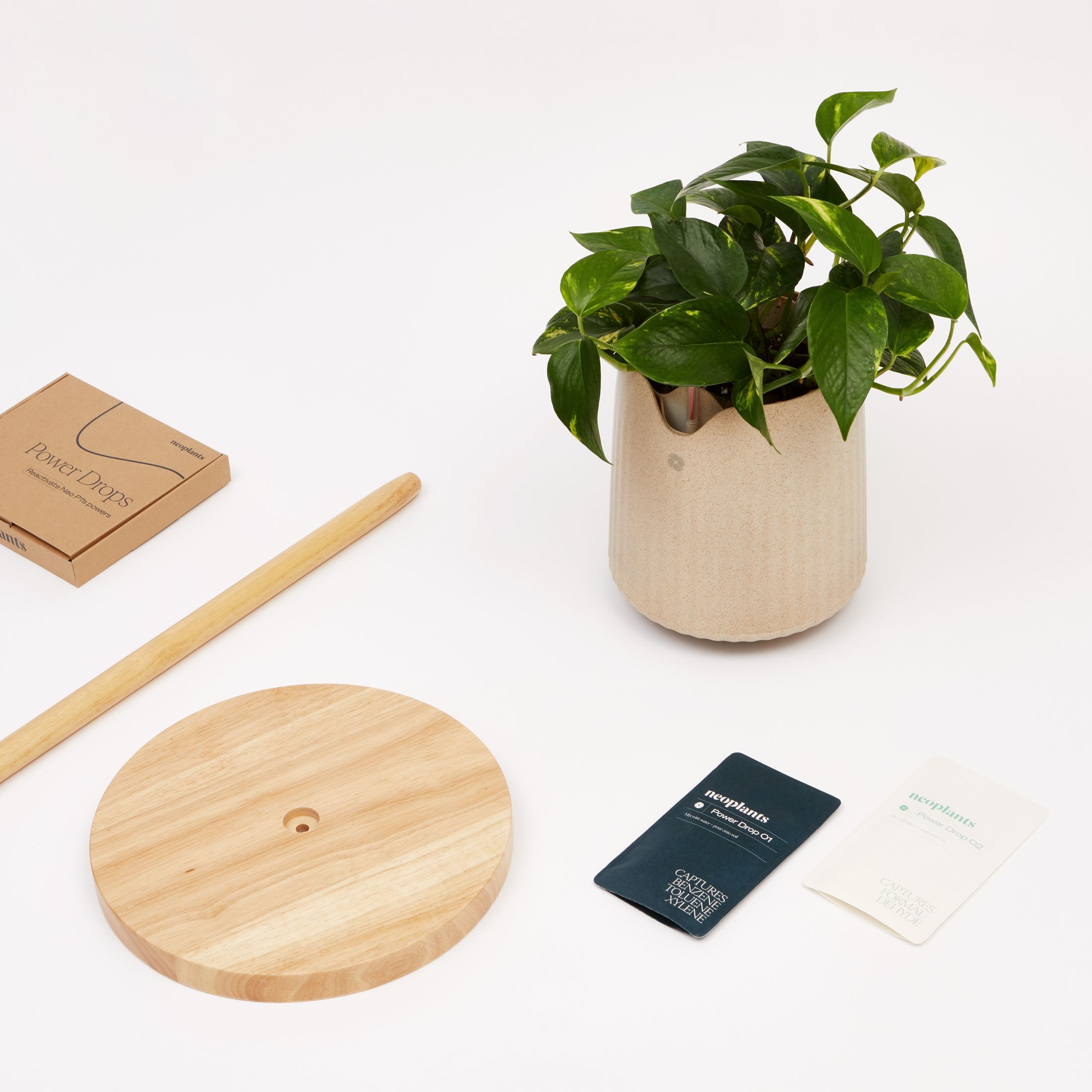Technical Specifications
4 harmful pollutants targeted¹ (Formaldehyde, Benzene, Toluene & Xylenes)
x30 depollution capacity compared to regular plants²
160 sq2 recommended area for one Neo P1³
0 dB volume level
24/7 working hours
0 Watts power consumption
5 sprouts pet pot
150 in² initial leaf area¹
19 months minimum time since initial cell transformation
40 000 genes
2 new metabolic pathways created
140 kbit (70 kilo-base-pair) total additional genetic information added²
California State of production
50% to 70% recommended humidity conditions for optimal growing
77°F to 83°F recommended temperature conditions for optimal growing
150 µE (indirect light) recommended light conditions for optimal growing
35% Flax composition for our Shell¹
65% PLA composition for the outer Shell¹
800 mL water tank volume
1.9 lb total weight
8.5 in Shell height
7.5 in Shell width
43 in total height
Illinois state of production
10% Pseudomonas putida Scientific name for the good bacteria that targets BTX pollutants
8% Methylobacterium extorquens Scientific name for the good bacteria that targets Formaldehyde pollutants
12% Soy proteins A source of energy to help the good bacteria live longer
70% Mixture of nutritional ingredients A formulation designed to feed the good bacteria¹
30 days Optimal inoculation frequency (we recommend replenishing your Neo P1's soil each month to maximize its performance)
-4°F to 40°F Recommended storage temperature range
Florida State of production
Process
At Neoplants we work with Nature to bring you new types of innovations that are sustainable by design, present many advantages but do require a lot of time to grow. Nature has its own rhythm, and we have to respect that. The process of building a Neo P1 is very technical and requires a lot of care. Regenerating plants from transformed cells and growing them into mother plants, from which we then produce commercial plants, is a long process. From lab to home, the goal is to bring the best possible product to consumers with each successive batch, advancing the frontier of air purification technology.
Wild-type plant
4 months
Fully transformed callus
3 months
Baby shoot
2 months
Baby plant
5 months
Mother plant
5 months
Final NEO P1
1 week
Complete package
1 week
Delivery
1-10 business days
Fig 1. NEO P1 stages of development.
Live
18:57 (GMT+2)
For every Neo P1 we’ll sell, we commit to invest a minimum of $20 into research and development against climate change.
The presence of CO₂ in the atmosphere is one of the major causes of global warming. We believe the only way to solve this urgent issue in a sustainable manner is with biology. Our technologies show massive potential for fighting climate change with Nature and by purchasing our products you can also help us get there. We'll give you full transparency on that with a comprehensive yearly report.
